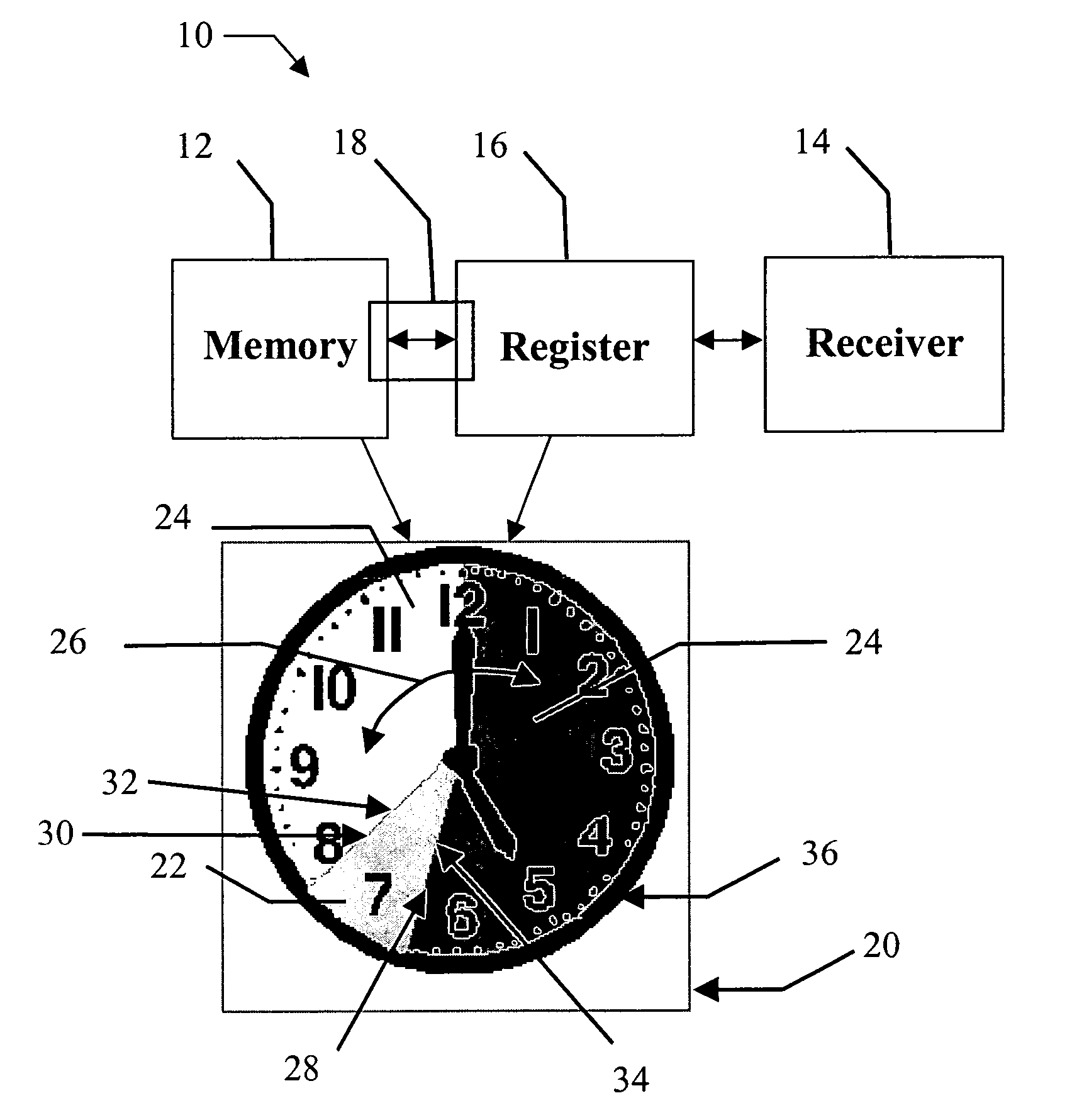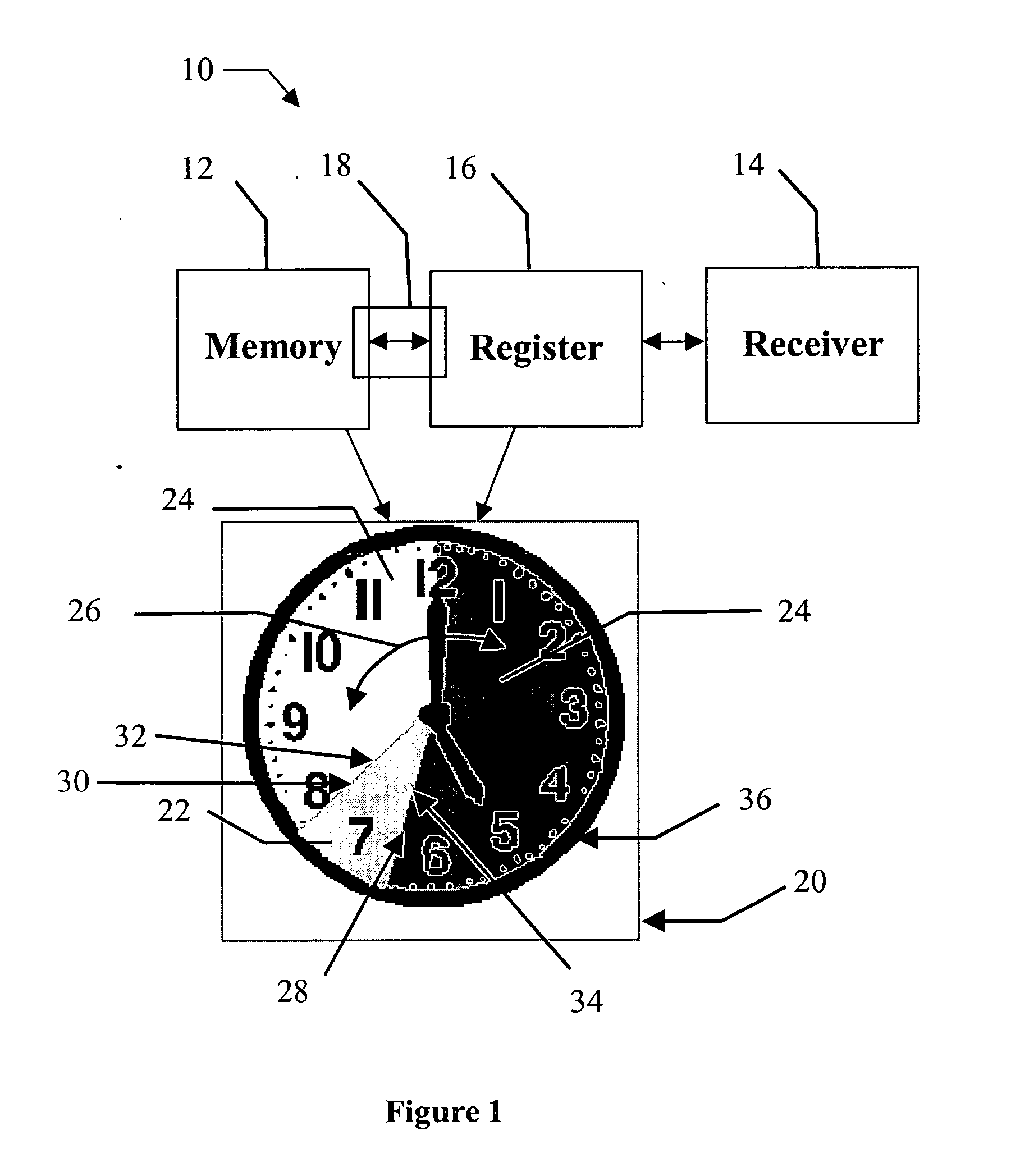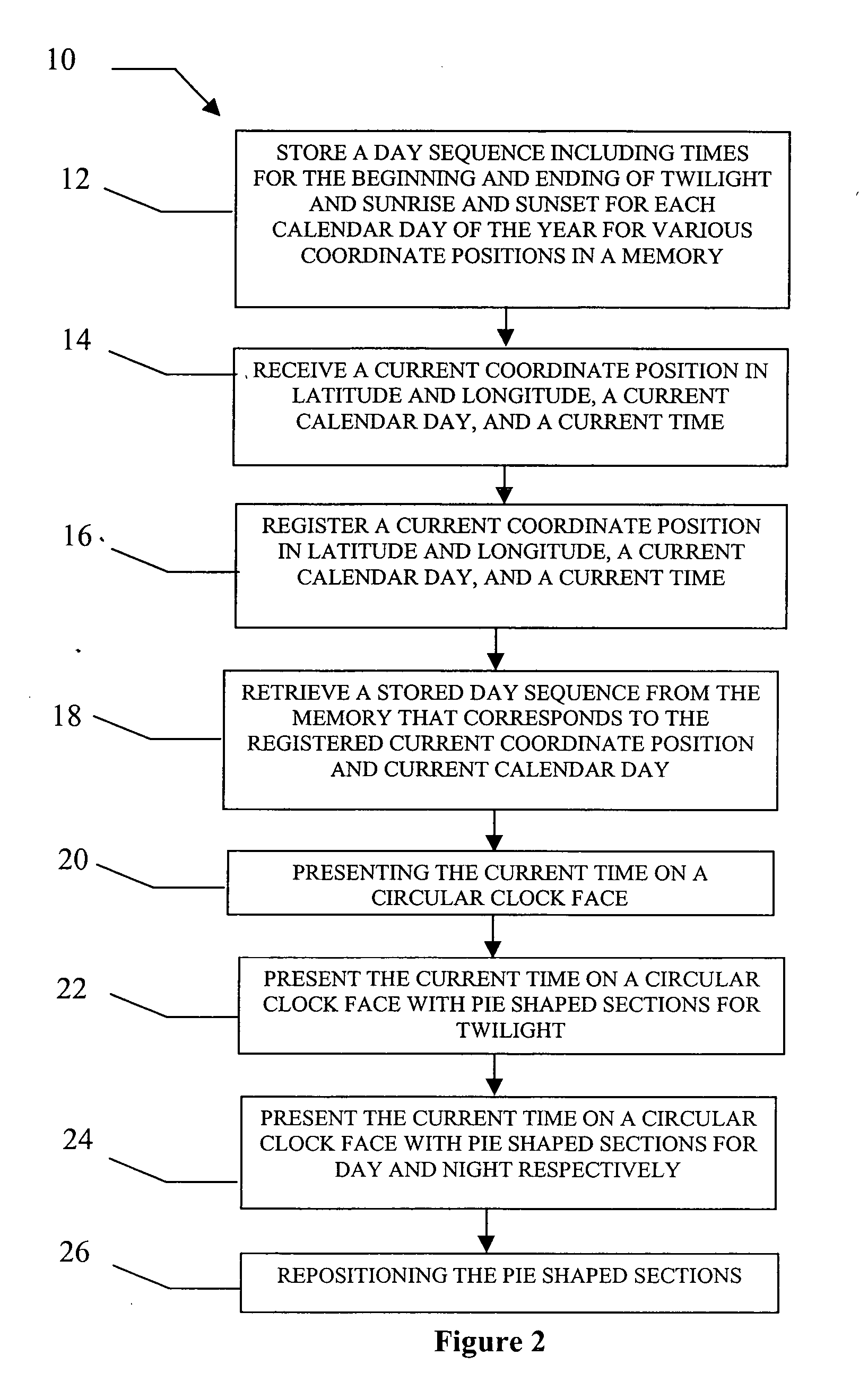Angular twilight clock
- Summary
- Abstract
- Description
- Claims
- Application Information
AI Technical Summary
Benefits of technology
Problems solved by technology
Method used
Image
Examples
Embodiment Construction
[0014] Referring to FIGS. 1 and 2, a method and apparatus for displaying time are generally shown at 10. Those skilled in the art will appreciate that the term “twilight conditions” used herein refers to the time for twilight, sunrise and sunset. Twilight is the soft, diffused light from the sky when the sun is ante meridian or post meridian below the horizon. Twilight occurs either from daybreak to sunrise or from sunset to darkness. There are three scientifically recognized types of twilight: civil, nautical and astronomical. Each is defined by how the distance or angle of the sun's center below the horizon. Civil twilight is when the sun's center is six degrees (6°) below the horizon; nautical twilight is when the sun's center is twelve degrees (12°) below the horizon; and astronomical twilight is when the sun's center is eighteen degrees (18°) below the horizon. Twilight conditions vary based on the geographical location and the calendar date. The method described herein display...
PUM
 Login to View More
Login to View More Abstract
Description
Claims
Application Information
 Login to View More
Login to View More - R&D
- Intellectual Property
- Life Sciences
- Materials
- Tech Scout
- Unparalleled Data Quality
- Higher Quality Content
- 60% Fewer Hallucinations
Browse by: Latest US Patents, China's latest patents, Technical Efficacy Thesaurus, Application Domain, Technology Topic, Popular Technical Reports.
© 2025 PatSnap. All rights reserved.Legal|Privacy policy|Modern Slavery Act Transparency Statement|Sitemap|About US| Contact US: help@patsnap.com



